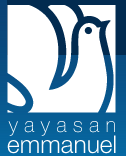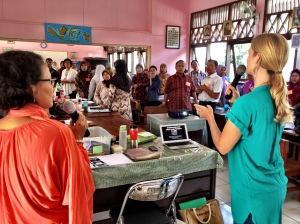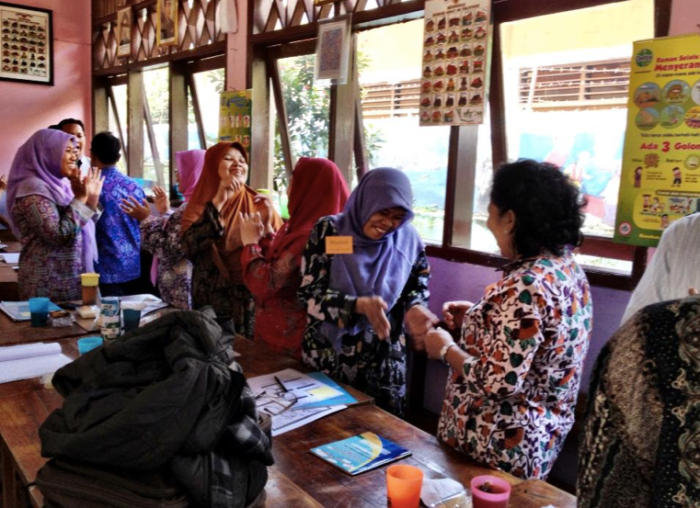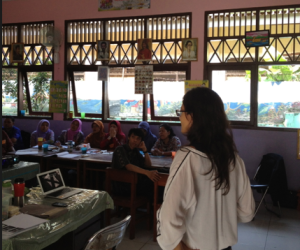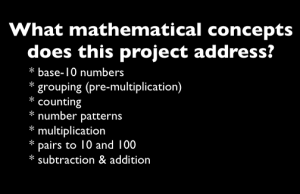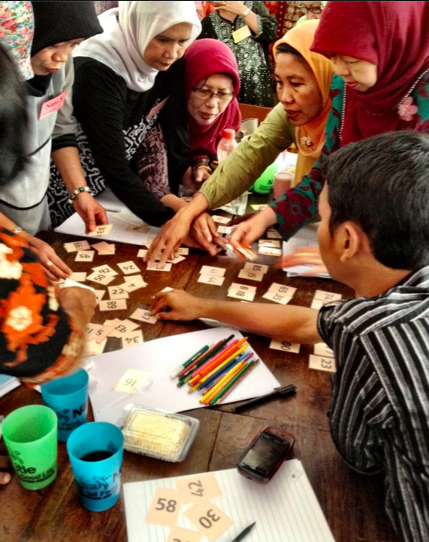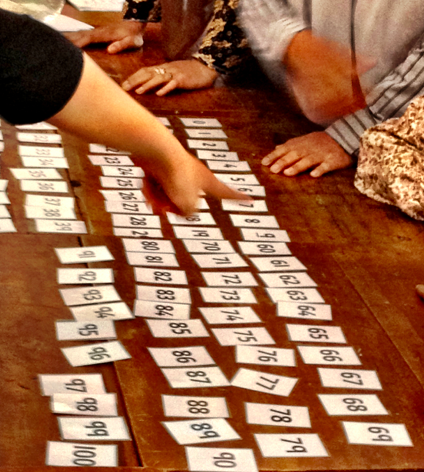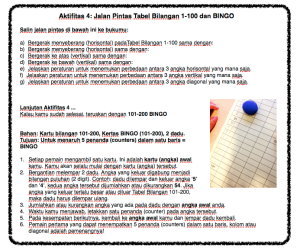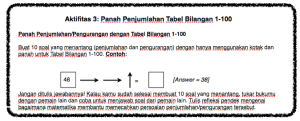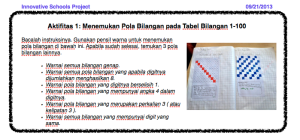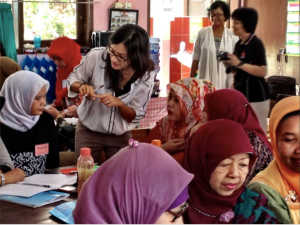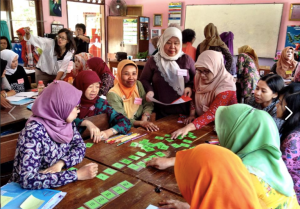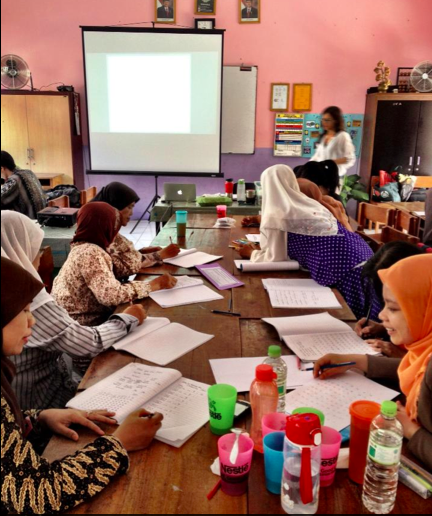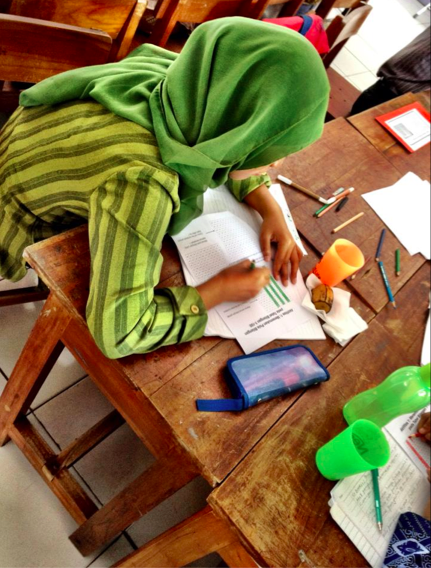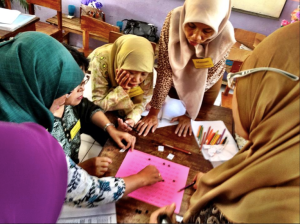Innovative Schools Project (Yayasan Emmanuel)
This past Saturday, 6 teachers from SWA visited SDN 13 Pondok Labu Primary School in South Jakarta. We arrived around 8am with time to spare before our 70 participants arrived.The room was much smaller than we’d anticipated, making the rotations plan a bit of a challenge! Still, once everyone arrived, we were welcomed and greeted by smiling faces and warm applause.
Ice Breaker
Tricia our Community & Service Coordinator started everyone off with a game called ‘1, 2, 3’ where participants faced a partner and counted back and forth 1, 2, 3 (taking turns). Within seconds of the game the small room erupted in laughter as teachers stumbled over their numbers. The game got more challenging as numbers were replaced by claps and then a stomp to mix things up. The message at the end: Math can sometimes be challenging, but it can also be fun.
Background on local schools
To begin, I had little understanding of where my audience was from but after discussions with previous ISP presenters and the organizers, I understood that these local schools are interested in learning about more innovative, hands-on approaches to teaching maths. Many schools have at least 40 students in a classroom and follow a strict text-book-style approach to delivering math concepts. Memorization of math facts also seemed to be a common practice. All 70 were native Indonesian and Bahasa-Indonesia speakers…luckily we had 2 translators to help!
Sharing understandings
I based my workshop around the most recent projects we had done in 4J…specifically the 1000s Project.
I presented the idea of constructivism, starting with the quotation
“Constructing and understanding a new idea involves making connections between old ideas and new ideas”
Keynote Presentation used:
I explained how the purpose of the 1000s project was the investigate this large number and bring in current conceptual understandings so that I could informally assess their level at the start of the year. The teachers were as surprised as I was at how many gaps students had. Many explained afterwards that in Indonesia each grade level has a book and they just work through the text, regardless if the child has grasped the concept or not.
By the end of the presentation, I put the question to the audience to find out what math was addressed in this 3-day project. They were able to comment on the variety of concepts pre-assessed such as:
The translators explained that they didn’t have a translation for ‘base-10’, although they frequently worked with numbers as multiples of 10. I explained that after the 1000s project, I realized I needed to revisit 100 to solidify their understanding of bonds to 100, and multiples of 10.
100s Chart Activities
The rest of the workshop was more hands on as teachers got a chance to trial some of the 100s chart activities we did in my class. To tune them into #s to 100 I gave 2 tables a bag of numbers from 0-100. They had 5 minutes to organize the numbers in a way that made it ‘easy to count’. I was trying to see if they would come up with the idea to make a 100s chart. (Prior to this workshop my Indonesian teaching partner had told me she had never used a 100s chart in school before). Although neither group came up with the formation of the 10×10 100s chart, they were both equally thoughtful and clever:
Group 1 = pairs that make 100 (ex: 47 & 53, 25 & 75 etc)
Group 2= grouped into sets of 10 (0-9, 10-19, 20-29 etc. but not in a 10×10 arrangement)
I went on to explain the 4 activities (see previous blog) they would trial in their school groups. Unfortunately due to time constraints, they only had a chance to try one activity/group, but groups explained the activity afterwards and everyone got a translated copy of the activities, as below:
I used to think…but now I think
To close our 1.5 hour workshop, Tricia led a reflection based on the Harvard Project Zero Visible Thinking Routines.
One representative from each school shared their reflections & learning from today, in 1 minute or less, starting with “I used to think…but now I think…”. Some of the reflections included the following (paraphrased from the translation):
“I used to think maths was boring and challenging, but now I see ways to make it fun for the students”
“I used to think memorization such as 1+1 =2, 1+2=3, 1+4=5 was the only way to learn addition, but now I will use the 100s chart to give them new ways to understand numbers”
“I used to think maths was the subject everyone dreaded, but now with these games maybe it can be the subject everyone looks forward to”
One teacher at Santi Rama School for the Deaf (who our Grade 4 team are already collaborating with) reflected that when working with her deaf students they need many hands on activities to understand concepts and she felt these learning engagements would increase their enjoyment and success in maths.
Workshop Leader Reflections…
It was an incredibly successful and rewarding day, and one that will definitely mark my time here as an international teacher in Indonesia. All the teachers, principals, and organizers were so appreciative and enthusiastic. As a follow-up, some teachers might visit our school to see what hands-on maths activities ‘look like’ in action! Thanks to our CAS program, I look forward to more opportunities for international schools & teachers to work collaboratively local community schools.
